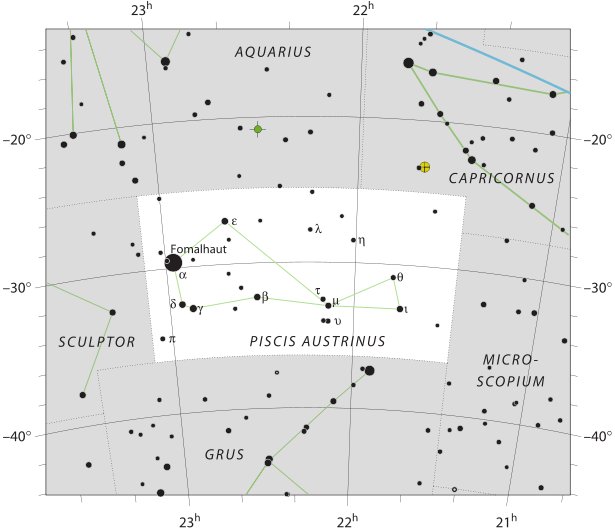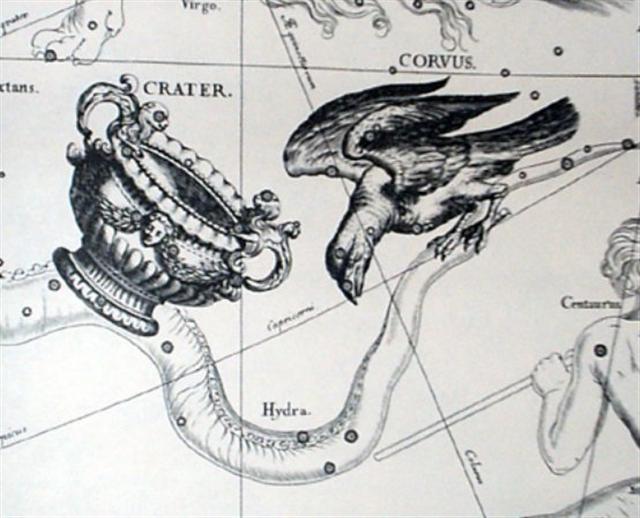It is time to move on to March, when the northern sky roof once again will be raised high:
I suddenly got the idea, when counting day numbers for the tables above, that the Gregorian year has to be counted past day 365 (but not necessarily so the manzil calendar). February 28 is day 59 counted from January 1, but maybe we should rather think of February as belonging to the previous ('old') year, in which case February 28 becomes day 365 + 59 = 424 (and 42 * 4 = 168 = 24 weeks). Similarly we can, at Ca13-2, count 365 + 60 = 425 (where 42 * 5 = 210 = 30 weeks). But this happens only every 4th year. The central (important) glyph in the triad from Ca13-4 represents day 63 in a leap year, and 63 (= 9 weeks) must be added to the glyphs on the G tablet in order to reach the right ascension days in rongorongo times. 365 + 63 = 428, where 42 * 8 = 336 = 48 weeks. The component 42 in these multiplications equals 6 weeks, which then will generate number of weeks also in the products. 420 (42) = 365 + 55 occurs in February 24, with the exceptional (watery) vae where Metoro negated the state of emptiness (pau) and where 12-24 could allude to Christmans Eve (with Canopus close to the Moon):
The last multiple of 42 is at tagata in Ca13-6, where 13-6 could allude to May 16 (136), the last day in the manzil calendar. 365 - 292 (Saad Balaa 7) = 73 = 365 / 5. 42 * 9 = 378 = 54 weeks = the cycle of Saturn. The pair of Jokers added to an well ordered deck of cards (with 13 * 4 = 52 cards) could represent the fortnight added to 364 (= 52 weeks) in order to reach the cycle of Saturn. 348 days after March 21 (= 17 days before March 21) has a tagata with an empty hand in front. This is where in rongorongo times the flow from the Urn reached the mouth of the Southern Fish:
Side b of the Mamari tablet has 348 glyphs and possibly this could be because the text on side b covers the time from the March equinox to the heliacal rising of Fomalhaut. 3 * 48 = 144 = 12 * 12. My star list contains only α (Fomalhaut) and I should now update it with the rest of the stars of the fish in the south swimming upside down. But first I recall another instance of swallowing all the waters: ... The Pythagoreans make Phaeton fall into Eridanus, burning part of its water, and glowing still at the time when the Argonauts passed by. Ovid stated that since the fall the Nile hides its sources. Rigveda 9.73.3 says that the Great Varuna has hidden the ocean. The Mahabharata tells in its own style why the 'heavenly Ganga' had to be brought down. At the end of the Golden Age (Krita Yuga) a class of Asura who had fought against the 'gods' hid themselves in the ocean where the gods could not reach them, and planned to overthrow the government. So the gods implored Agastya (Canopus, alpha Carinae = Eridu) for help. The great Rishi did as he was bidden, drank up the water of the ocean, and thus laid bare the enemies, who were then slain by the gods. But now, there was no ocean anymore! Implored by the gods to fill the sea again, the Holy One replied: 'That water in sooth hath been digested by me. Some other expedient, therefore, must be thought of by you, if ye desire to make endeavour to fill the ocean ...
In rongorongo times Canopus rose heliacally in June 25 (176) and was close to Moon in December 24 (12-24). From Canopus to Fomalhaut there are 347.8 - 95.6 = 252 days = 36 weeks. According to my idea that what happens at one side of the sky is reflected (mirrorwise) at the other end of the sky, it should be fruitful to jump across the sky from Ca12-24 to Ca6-25 (alluding to June 25):
March 4 (64) was here (in September 2) reflected in the nakshatra night and Fomalhaut could be observed close to the Moon - as if illustrating how far away and out of reach Water was. Instead it was Alkes (α Crateris) which was close to the Sun and Crater may have represented the complete absence (pau) of water (with nothing to drink for Raven):
| |||||||||||||||||||||||||||||||||||||||||||||||||||||||||||||||||||||||||||||||||||||||||||||||||||||||||||||||||||||||||||||||||||||||||||||||||||||||||||||||||||



















